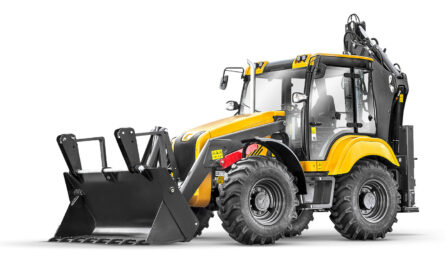Over the years, these systems have evolved significantly with advancements in detection, tracking and engagement technologies. This article discusses some key aspects of modern air defense systems and their importance for countries around the world.
Radar Advancement
Radars are one of the most important components of any air defense system as they act as the “eyes” for detection and tracking capabilities. Early radar systems had limited range and accuracy but modern 3D radars have revolutionized air defense. Advances like active electronically scanned array radars, over-the-horizon radars and space-based radar systems have enhanced detection ranges to several hundred kilometers. These new generation radars can simultaneously track hundreds of targets, determine their speed, altitude and trajectory with high precision. They also have advanced signal processing which enables detection of stealth targets and discrimination of friendly forces. This crucial situational awareness provided by modern radars greatly improves response time for air defense weapons.
Surface-to-Air Missiles
Surface-to-air missiles (SAMs) form the main weapons component for engaging aerial threats locked on by radar systems. First generation SAMs had short ranges and rudimentary guidance but latest versions are highly advanced interceptors. Medium range SAMs like Patriot PAC-3, SA-20 and S-300PMU-2 have engagement ranges of over 100km while long range SAMs like S-400 Triumf and THAAD can strike at evasive targets as far as 400km away. Modern missiles also use advanced active radar, infrared imaging or electro-optical seekers for precise terminal guidance. Some even have advanced capabilities like anti-ballistic missile defense. This long stand-off range coupled with high-speed and maneuverability gives robust protection against any airborne threats.
Command and Control
To effectively coordinate an integrated Air Defense Systems network spread across a large region, sophisticated command and control (C2) systems are required. Systems like the Russian Automated Control System and U.S. Integrated Air Defence System use robust landlines, microwave links and secure satellite communications for real-time sharing of target data between different radar stations, SAM sites and command centers. They have advanced battle management interfaces to provide a centralized tactical picture to operators and enable rapid coordination between different weapon systems in an theater. Modern C2 networks also integrate cyber defenses against communication jamming or network infiltration by adversaries. Their role in facilitating fast-response will become even more critical with autonomous systems in future air defense ecosystems.
Multi-Layered Defense Networks
Modern air defense architecture follows a multi-layered defense-in-depth approach for full-spectrum protection. Long range SAMs provide the outer perimeter while medium and short range systems create additional engagement layers. This layered network design complicates penetrations for any adversary as targets having to avoid or outmaneuver defenders at multiple altitude bands. Deployment of different air defense elements is also done such that redundancy exists and critical assets are protected from all sides using overlapping fields of fire. Future concepts also include using fighter aircraft, unmanned combat aerial vehicles and ground-based lasers as additional layers in an integrated kill web against aerial targets.
Influence of Technology Advances
The breakneck pace of emerging technologies continues influencing evolution of air defense capabilities significantly. Promising technologies such as directed energy weapons, hypersonic missiles, advanced materials and stealth design pose new challenges which nations are addressing through development of counter-technologies. Artificial intelligence and machine learning show promise in speeding up coordination between system elements and precision discrimination during combat engagements. Space technologies are also being evaluated for deploying air defense assets in new dimensions beyond traditional ground and sea domains. Network-centric operations will drive development of distributed and autonomous air defense ecosystems in future.
As aerial warfare domains evolve rapidly with new doctrines and technologies, nations continue investing heavily in modernizing their air defense postures. Advancements in sensing, precision-engagement and networking capabilities have transformed static point-defense systems of the past into highly agile, multi-domain networks providing layered protection over strategic zones and critical infrastructure. While threats will continue emerging, technologically advanced air defense networks will remain linchpins for maintaining air sovereignty and national security worldwide for generations to come.
Note:
1. Source: Coherent Market Insights, Public sources, Desk research
2. We have leveraged AI tools to mine information and compile it



